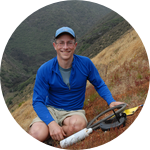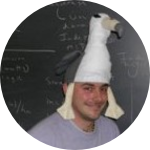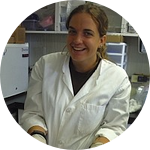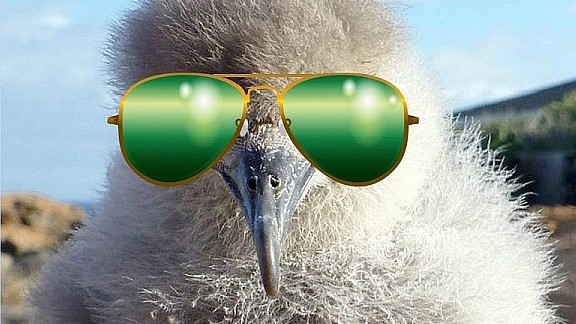Project Results
HPU graduate Jennifer Urmston has published the first chapter of her MS thesis. Working with U.S.F.W.S. special agent Keith Swindle and her HPU advisor (Dr. David Hyrenbach), Jenn analyzed 8 years (2012–2019) of observations of road-killed shearwaters along the Kalanianaʻole Highway on Oʻahu to compare mortality before (2012–15) and after (2016–19) a transition in highway lighting from unshielded high-pressure sodium (HPS) to full-cutoff light-emitting diode (LED) streetlights. Altogether, the interaction between moon illumination and wind speed was the most important predictor, suggesting that more shearwaters are grounded during nights with low moon and strong winds. The lack of an increase in mortality after the change from HPS to shielded LED streetlights suggests the new streetlights did not worsen the light pollution impacts on wedge-tailed shearwaters on Southeast Oʻahu.
About This Project
Wedge-tailed Shearwater chicks are attracted to lights and grounded due to collisions with utility wires / posts and hit by cars. Since 2011, we have surveyed a coastal highway during fledging (Nov-Dec) and have documented grounded shearwaters. We will use this 5-year baseline to test if deaths increase or decrease after the installation of new highway LED lights. This study will reveal whether the lights being replaced throughout Hawaii will impact these native seabirds.
Ask the Scientists
Join The DiscussionWhat is the context of this research?
Wedge-tailed Shearwaters breed on islets along the windward coast of O'ahu. Fledging birds are attracted to lights, grounded due to collisions with utility wires, and hit by cars.
Since 2011, we have documented shearwater fallout along a 16-km stretch of a coastal highway during the fledging season (Nov-Dec). Fallout peaked in 2011 (128 birds), and declined after managers stopped illuminating the Waimanalo park at night (2012-15 mean = 25.7 birds +/- 23.1 S.D.).
In July 2016, the Department of Transportation replaced the orange sodium highway lights with white LEDs to decrease energy consumption. We will test that these new high-intensity lights do not increase shearwater fallout, by comparing our 2012-15 baseline data with standardized surveys during the 2016 fledging season.
What is the significance of this project?
The Wedge-tailed Shearwater is a seabird protected by State of Hawai'i and Federal statutes in the U.S. The species is susceptible to introduced predators and collisions with human structures.
Our research seeks to raise awareness of the plight of fledging shearwaters and to motivate actions to minimize light pollution impacts on this species. In 2012, working with State of Hawai'i wildlife managers, we managed to turn off the lights of the Waimanalo beach park, an action that lead to an 80% reduction in fallout.
We are concerned about the installation of high-intensity highway lights in July 2016. We will test that the newly-installed LEDs do not increase shearwater mortality by comparing the 2016 fallout rates with standardized surveys from the last 4 years (2012-15).
What are the goals of the project?
Our overarching goal is to increase public awareness about wedge-tailed shearwater fallout and to stimulate mitigation actions aimed at reducing the mortality of fledging birds.
More specifically, we will complete the following activities:
- survey a 16-km section of the Kalaniana'ole Hwy, using the same standardized methods used since 2011 to document and map shearwater fallout during the 2016 fledging period,
- mark and resight randomly-selected carcasses at daily intervals to quantify potential biases in the road surveys due to loss by scavenging and rain, and
- disseminate our study results to wildlife managers and the public via social media, a scientific presentation at the Hawaii Conservation Alliance Conference and a public seminar at HPU.
Budget
The donations will go directly to cover the time of a HPU marine science graduate student, Sarah Donahue, who will conduct 16 road surveys, process the images, map bird location data, post weekly updates on Experiment and Facebook, keep track of project expenses, and present the research at a conference. The salary rate is $15 / hr, plus 14% tax.
Donations will also support $300 for Donahue to print and present a research poster at the Hawai'i Conservation Alliance Conference in O'ahu (July 2017).
Donations are also needed to cover the mileage of 60 road surveys (16 by Donahue and 44 by Hyrenbach), spanning 32 miles roundtrip, at a cost of $0.15/mile.
In addition, matching and inkind contributions from Oikonos and Hawaii Pacific University will guarantee success of the project. Specifically Dr. Hyrenbach (advisor) will conduct 44 resighting road surveys to check on marked shearwater carcasses and will give a public presentation of the results.
Endorsed by
Meet the Team
Affiliates
Affiliates
K. David Hyrenbach
David Hyrenbach was born in Spain, earned a Ph.D. in Oceanography from the Scripps Institution in 2001, and moved to O’ahu in 2008.
David has been an Oikonos research associate since 2001, and is a professor of oceanography at Hawai'i Pacific University.
David’s research examines how oceanographic variability shapes the distributions of marine vertebrates, and how habitat preferences influence the efficacy of spatially-explicit management strategies. He has pursued these questions by developing the conceptual foundation for pelagic marine protected areas (MPAs), assessing the overlap of seabirds with fisheries, and quantifying the habitats of far-ranging species.
Since coming to Hawaii, David has been using marine predators as biological indicators of plastic pollution in marine food webs. Students in the pelagicos lab work on a variety of research topics, involving the distribution, foraging ecology, diet, and plastic ingestion by seabirds in relation to oceanographic variability. More recently, the lab has been studying the diet and plastic ingestion by commercially-valuable predatory fishes, like skipjack tuna and mahi-mahi, and their prey.
Since 2009, the lab has been monitoring Wedge-tailed Shearwaters nesting at the Freeman Seabird Preserve in O'ahu (Hawai'i) and studying their attraction and grounding due to artificial lights. During the 2022 breeding season, we started tracking their winter migration across the North Pacific.
To learn more, check out:
Featured by Vice News - April 7, 2017
News piece on CNN - March 11, 2013
Sarah E. Donahue
Sarah Donahue is a Master's of Science in Marine Science (MSMS) graduate student in the pelagicos laboratory, at HPU.
Sarah has experience on many aspects of seabird research, involving captive care, tagging, necropsies, diet analyses, and diet identification using genetic methods.
Sarah will lead the data collection, the synthesis of results and the outreach efforts for this project.
Project Backers
- 36Backers
- 100%Funded
- $2,400Total Donations
- $66.67Average Donation




